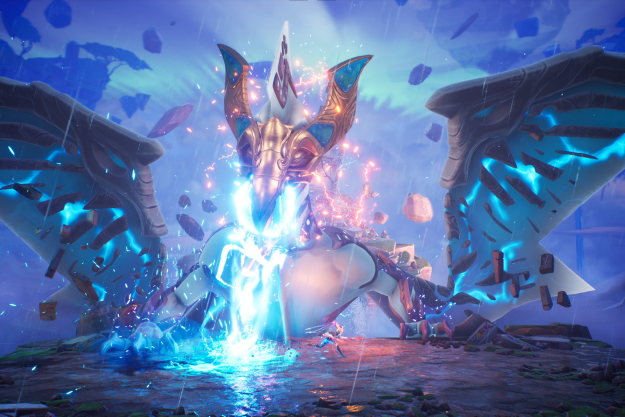A new study has examined the energy use of gaming devices across the county, and it’s bad news for anyone hoping to escape global warming by diving into a video game.
“Toward Greener Gaming: Estimating National Energy Use and Energy Efficient Potential,” published in The Computer Gamers Journal, found that U.S. gamers consume an incredible 34 terawatt-hours of energy each year. That’s 2.4% of all residential electricity, with carbon emissions equal to more than 5 million cars, adding up to $5 billion spent. Gaming sucks down more power than all the nation’s freezers.

The study has plenty of blame to go around. In 2016, the year used as a baseline for most of the study’s findings, consoles were responsible for 66% of gaming energy consumption. PC desktops used 31%, PC laptops used only 3%, and the rest was consumed by media streaming devices (like Apple TV or Nvidia Shield).
PC gamers aren’t out of the woods, however. While they contributed less to power consumption overall, PCs tend to be less efficient than consoles and represent the highest per-household consumption in extreme examples. The study describes a worst-case scenario of a home with two high-end gaming PCs, overclocked, using multiple 4K displays. That would eat up 2,560 kilowatt-hours per year.

Often, the inefficiency of PC gaming can be blamed on bad build decisions. The study “found dramatically oversized power supplies in almost all” PC desktops tested. That reduces efficiency because most power supplies deliver poor efficiency when only consuming a small fraction of their maximum output.
Surprisingly, virtual reality comes out of the study unscathed. While virtual reality can increase power draw due to higher display resolutions, the use of techniques like foveated rendering can compensate. Virtual reality’s results were worst when a VR headset was used alongside an external display
It’s a bleak picture, but there’s a faint silver lining. Gaming energy is projected to be 33.6 terawatt-hours in 2021, a mere sidestep from today. Energy efficiency improvements should offset new hardware and an expanding user base. That means the future should, at least, be no worse than the present.
However, the study notes that “alternative scenarios” could be as low as 29.4 terawatt-hours, or as high as 76.9 terawatt-hours, depending on “the evolution of gaming methods and system types.”
What can you do to game greener?
There’s more to the study than a report on gaming power consumption. It also makes recommendations for how gaming’s overall efficiency can be improved.
In-game diagnostics could be used to give gamers a better sense of energy use. While framerate and frame time figures are watched closely, games do little to inform gamers how much power they’re using. The study further recommends that “developers may consider ‘gamifying’ this information.”
Policy strategies are also recommended. There’s currently no government-sponsored consumer education campaign directed at energy use of gaming hardware. Consoles, gaming PCs, and other gaming hardware aren’t required to provide any energy use information aside from that usually required for any electronic device.
There are a few immediate recommendations gamers can take, as well. 4K displays are beautiful, but if you want to game greener, skip them. This is true for both televisions and monitors. Additional monitors also add significantly to power draw. Overclocking should be avoided, while undervolting can improve efficiency.
Finally, PC gamers should consider using V-Sync and in-game framerate caps. Those settings can reduce energy use by up to 39%.
Editors' Recommendations
- Jeep is launching its first two electric SUVs in the U.S. in 2024
- FAA says 50 U.S. airports won’t get expanded 5G coverage until later in 2022
- Nokia’s new G300 may be the most affordable 5G phone in the U.S.
- Elon Musk announces $100M prize for carbon-capture technology contest
- T-Mobile becomes the first carrier to create a nationwide U.S. 5G network



